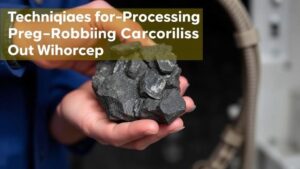Recovering Precious Metals From Marine Sediments Near Historic Shipwrecks
Recovering Precious Metals From Marine Sediments Near Historic Shipwrecks
The quest for treasures lost at sea has captivated humanity for centuries. One fascinating aspect of marine archaeology is the recovery of precious metals from the sediments surrounding historic shipwrecks. This process not only sheds light on maritime history but also has significant economic implications. following article explores the methods and technologies involved, notable case studies, and the environmental considerations of this practice.
Understanding Marine Sediments
Marine sediments are particles that settle at the bottom of oceans and seas, often accumulating in layers over millennia. They include a combination of organic matter, minerals, and metals. Precious metals such as gold, silver, and platinum can often be found in these sediments, particularly near historic wrecks where valuable cargo was lost.
- High metal concentrations can result from cargo spills during sinking events.
- Natural ocean currents can facilitate the redistribution of these metals, making recovery more challenging yet rewarding.
Methods for Recovery
Recovering precious metals from marine sediments utilizes a variety of techniques, primarily categorized into two avenues: mechanical recovery and chemical extraction.
Mechanical Recovery
This method involves the use of specialized equipment that dredges or scoops sediments from the ocean floor. Tools such as remotely operated vehicles (ROVs) and autonomous underwater vehicles (AUVs) are deployed to capture samples. The dredging process is akin to mining on land, where surface layers are disturbed to expose buried rewards.
- Example: The Odyssey Marine Exploration expedition in 2007 successfully located and recovered artifacts, including precious metals, from the wreck of the SS Republic using ROVs.
Chemical Extraction
After mechanical recovery, sediments are often treated with chemical solutions to isolate precious metals. Techniques such as cyanide leaching, using a dilute cyanide solution to dissolve gold, have been employed, although the ecological impact of such methods raises serious concerns.
Notable Case Studies
Several historic shipwrecks have been targeted for rich recoveries. Notable examples include:
- The Atocha: Sunk in 1622, this Spanish galleon was discovered off the Florida Keys. The recovery efforts yielded approximately 40 tons of gold and silver.
- The Titanic: Although primarily associated with loss and remembrance, some expeditions have examined the sediments around its wreck for artifacts and potential precious metal recovery with limited success thus far.
Environmental Considerations
While the allure of recovering precious metals is enticing, it is essential to consider the environmental ramifications of such activities. Dredging and chemical processes can significantly disturb marine ecosystems. e practices may release heavy metals and toxins into the water, harming aquatic life and ecosystems.
Environmental regulations and guidelines are necessary to mitigate these impacts, emphasizing the responsible recovery of resources. The establishment of protective frameworks, such as the UNESCO Convention on the Protection of the Underwater Cultural Heritage, aims to balance exploration and conservation.
Future Prospects
Advancements in technology, such as improved robotics and eco-friendly chemical methods, hold promise for future recoveries. Innovations may lead to more efficient extraction techniques that minimize environmental impact while maximizing yield.
Plus, as demand for precious metals continues to rise, declining terrestrial deposits make marine sediments an attractive alternative source. This dual benefit of economic gain and historical preservation presents a compelling case for further exploration.
Actionable Takeaways
For those interested in the field of marine archaeology and metal recovery, consider the following steps:
- Stay informed about advancements in underwater technology.
- Engage with professional organizations focused on maritime preservation and archaeological ethics.
- Support policies that promote sustainable exploration practices in marine environments.
To wrap up, recovering precious metals from marine sediments near historic shipwrecks is both an exciting and complex endeavor. By understanding the methods, challenges, and environmental impacts, stakeholders can work toward sustainable practices that honor both history and the health of our oceans.

